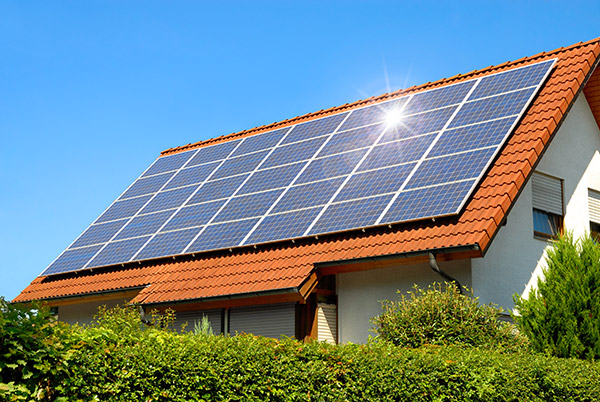
Are you tired of high electricity bills? Ready to save money on your electric bill and help the environment at the same time? Solar panels are a great way to cut your home energy bills. While they can be installed anywhere, solar cells placed on the roof typically receive direct sunlight for maximum production year-round. On cloudy days or in low light conditions, high-efficiency solar panels capture both indirect and direct sun rays as well as all seasons of the year!
When you start your solar project, one of the first questions a consultant will ask is about the age and condition of your roof. If it needs to be repaired or replaced before installation occurs, get that work done now.
There are several reasons why addressing any potential issues with roofs is vital when considering whether or not to install rooftop solar panels: safety being chief among them. It’s also essential for ensuring optimal functionality if installing new equipment on an old structure makes sense from time constraints standpoints. All things should always be considered whenever beginning this sort of construction process!
Why Roofs Are a Great Place for Solar Panels
If you want to make the most of your solar power installation, consider installing it on a roof. Roofs are among the best places for solar panels because they receive lots of sun exposure, and the sunlight is needed to produce electricity that can replace grid energy. By choosing a free rooftop with slopes towards where the sun rises or sets, you will ensure maximum greenhouse gas-free energy production! Installing these systems helps protect our environment and saves money since there’s less reliance on expensive electric grids. Solar panel installations aren’t just limited to rooftops; in fact, many outbuildings like barns or garages may be ideal locations too!

What Type of Roofing Shingles (Materials) is Best for Solar Panels?
Suppose you have an excellent condition asphalt-shingled roof with plenty of space. However, suppose your roof is in bad shape with lots of leaks. In that case, you should consider replacing it before installing solar panels if the shingles are worn out or broken and must be replaced anyway, considering putting up solar-ready materials like standing seam metal roofs during installation.
What Roof Type (Style or Design) is Best for Solar Panels?
Solar engineers and installers can split up solar arrays to follow the rooflines on your home, garage, shed, or barn. Whether it’s a gable, hip, or combination roof — they can figure out how best to fit panels around skylights, box vents & pipe boot flashings.
What Roof Slope is Best for Solar Panels?
If your roof doesn’t have an ideal slope for solar panels, individual panels can be manually adjusted to maximize sun exposure. Roof installers will help determine the optimal angle of the panel system in relation to your location’s latitude; this is typically between 15-40 degrees.
Is Your Roof Solar-Ready?
Before installing a solar power system on your roof, keep in mind that if something needs to be fixed or worked on with your home’s shingles, it is best to do this before starting. This will allow for minimal disruption and delays since there are no concerns about safety during installation!
What is the Square Footage of Your Roof?
Solar panels are installed on your roof, but they need to meet specific requirements. Building codes require pathways of open roof areas for access and ventilation in the case of a fire. Your solar consultant will determine if you have enough space based upon building code regulations with their assessment of your roof.
How old is your roof?
Before installing solar panels, a general guideline is having an asphalt shingle roof that’s ten years old or less in good condition. If your roof is over ten years old and you think it’s still in good enough shape for the job, then consider scheduling a full inspection to see if it’s safe from damage during the installation of the array. Repairs or replacements on your roof before installing solar can also help you avoid the need for re-installation if they are not completed beforehand, which could be very expensive depending on any damage incurred due to not doing so.

Is your roof in good condition?
A roof inspection includes checking for signs of damage, such as leaks and proper ventilation. The contractor will also look at the components that make up your roof (such as underlayment, vents, or flashing). Repairing issues before solar installation is always best because you’ll avoid future problems down the line.
Next Steps to goSolar
Solar panels are one of the best ways to help you save money on your energy bills, but they can be expensive and difficult to install if you don’t know what size or type is right for your home. But when it comes time for installation, there’s an easy solution: having a contractor like Semper Fi Exteriors come out before any other work begins so that we can discuss our solar plans with homeowners. Our team of specialists will develop unique solutions to ensure that you have the best possible installation for your solar panels.
